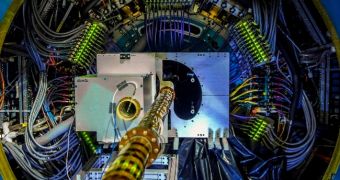Researchers with the Relativistic Heavy Ion Collider (RHIC) particle accelerator at the US Department of Energy's (DOE) Brookhaven National Laboratory (BNL) are pleased to announce that an elaborate experiment at the facility will be getting an extremely important upgrade soon, which will enable it to analyze a state of matter called quark-gluon soup more effectively.
At this point, RHIC physicists use the Solenoidal Tracker at RHIC (STAR) experiment to observe this state of matter, which is believed to have permeated the Universe for the first few microseconds of its existence. The first state of matter believed to have been produced by the Big Bang is the quark-gluon soup (QGP).
RHIC experts are the first group that claimed to have produced QGP in the lab, back in February 2010. A paper they released at the time said that this state of matter was obtained at a temperature level of 4 trillion (4×10^12) degrees Celsius (7.52 trillion degrees Fahrenheit).
In the very first microseconds of the Universe, only a mixture of elementary matter particles called quarks, and force carriers called gluons, existed. Astrophysicists and theoretical physicists say that studying QGP is the easiest way to understand why the Cosmos looks the way it does today.
To make their jobs easier, researchers at RHIC will install an upgrade called the Heavy Flavor Tracker on their STAR experiment. The STAR HFT will consist of three independent, silicon-based detectors. These instruments will be able to identify the decay products of hadrons comprised of quark flavors, or types, with a heavy mass. Quarks come in two versions, “charm” and “bottom.”
The upgrade was first proposed by physicist Howard Wieman, with the Nuclear Sciences Division at the DOE Lawrence Berkeley National Laboratory in California, nearly 15 years ago. The expert played an important role in the STAR HFT construction process, which began a few years later.
“The HFT enables precision tracking measurements of heavy quarks at low momentum where the particle production is most sensitive to the bulk medium created in heavy ion collisions,” says Berkeley Lab NSD physicist Nu Xu, who is also a spokesperson for the STAR experiment at RHIC.
“This allows us to distinguish the decay vertices of heavy flavor particles from primary vertices and significantly reduces combinational background, which yields cleaner measurements with a higher level of significance,” he concludes.

 14 DAY TRIAL //
14 DAY TRIAL //